Exhibitions Schedule 2020
The 70th anniversary exhibition of the Eisei Bunko Foundation
*Exhibition lineup and period are subject to change under the Covid-19 circumstances.
*No advance reservation is required. However, we may ask guests to wait at the entrance depending on the crowd condition inside the museum.
Early Spring Exhibition 2020
“Ancient Chinese and Oriental Art”
with Hosokawa Mirror on display for a limited period
- Period
- Saturday, February 15–
Wednesday, April 15, 2020Tuesday, March 31, 2020 - Closed
- Mondays except February 24, 2020
Closed on February 25, 2020
Hosokawa Moritatsu (16th Head, 1883-1970), the founder of Eisei Bunko, became acquainted with Chinese classical literature in his childhood and had strong passion for Chinese culture. During his eighteen months’ travel around Europe, Moritatsu purchased ceramics and metalwork such as “Bronze Dish with bird, animal, and cloud design”, which later was designated as a National Treasure. He was actively involved in collecting Chinese art after he returned and expanded his interest into Oriental art such as Islamic ceramic wares and tiles. Moritatsu formed his collection through his interactions with scholars such as Umehara Sueji (1893-1983). These artworks in the collection provided subjects of study for them as well as source material and inspiration for modern Japanese painters, for example, Umehara Ryuzaburo (1888-1986).
This exhibition features various Chinese and Oriental artworks in the Hosokawa collection. The exhibit includes ancient Chinese artworks such as “Bronze Mirror with design of hunting scene”, known as “Hosokawa Mirror”, modern Japanese paintings depicting Chinese scenes, and Oriental artworks that have not been much in the public eye. We also introduce Korean tea bowls that have been handed down through generations in the Hosokawa family. We hope the visitors enjoy exotic artworks from different regions of the world.
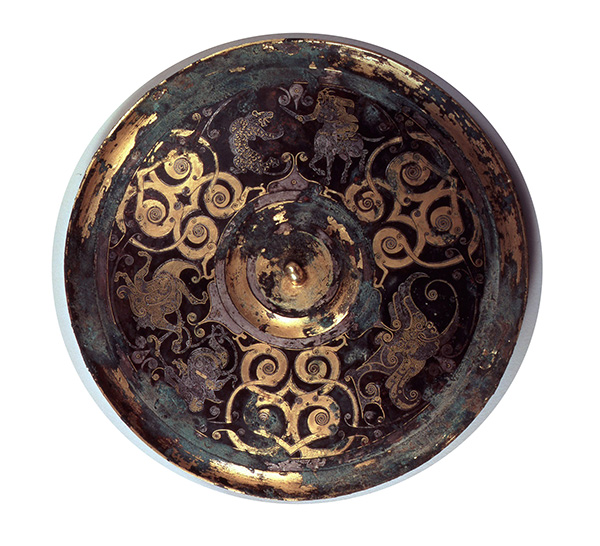
Bronze Mirror with design of hunting scene in gold and silver inlay
China, Warring States era, 4th-3rd century B.C.
Eisei Bunko Museum
On display from Saturday, February 15 to Sunday, March 15
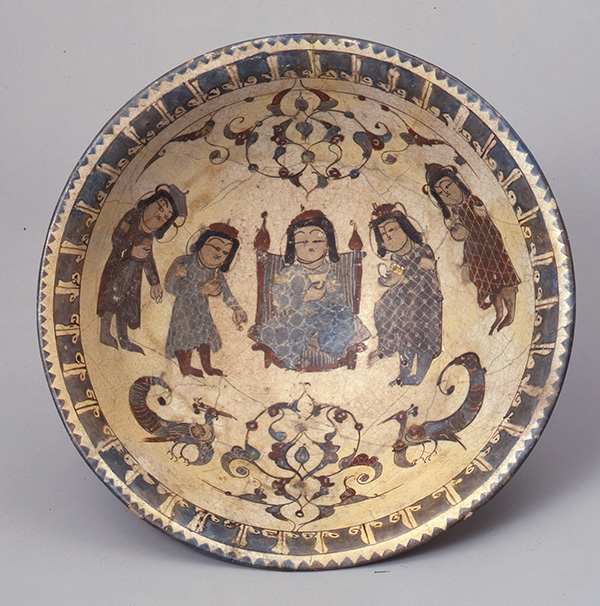
White glaze
Iran, 12th-13th century
Eisei Bunko Museum
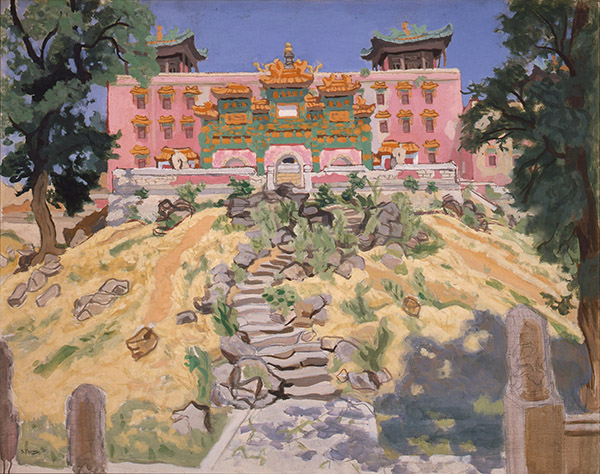
By Yasui Sotaro
1937
Eisei Bunko Museum
Summer Exhibition 2020
OKINA
–The world of Noh from the Hosokawa Family Collection–
- Period
- Thursday, July 23–Sunday, August 30, 2020
- Closed
- Mondays (Except when a national holiday falls on Monday.
In this case, the museum is open on the holiday and is closed the next weekday.) - Organization
- OKINA PROJECT Executive Committee, Agency for Cultural Affairs,
Japan Arts Council Special cooperation Kumamoto Prefectural Museum of Art
The art of Noh completed by Kannami and his son Zeami in the Muromachi period has come to be highly appreciated abroad as a traditional performing art of Japan. Since Hosokawa Fujitaka and successive heads of the Hosokawa family were devoted to Noh and performed Noh plays themselves, an extensive collection of nearly 700 objects used in Noh performances, such as masks, Noh costumes, musical instruments and props were handed down through generations at the Kumamoto and Tokyo residence of the family.
“Okina” is thought to be the most ancient and special Noh play. The god is believed to descend into the performer when he puts the mask on, and he dances praying for peace in the world and an abundant harvest. This exhibition introduces various god characters in Noh plays by displaying costumes and masks mainly in the program of “Okina” as well as precious documents which suggest the Hosokawa’s intimate acquaintance with Noh culture.
* Displays will be changed.

Noh Mask, Okina type
15th century, Muromachi period
Eisei Bunko Museum
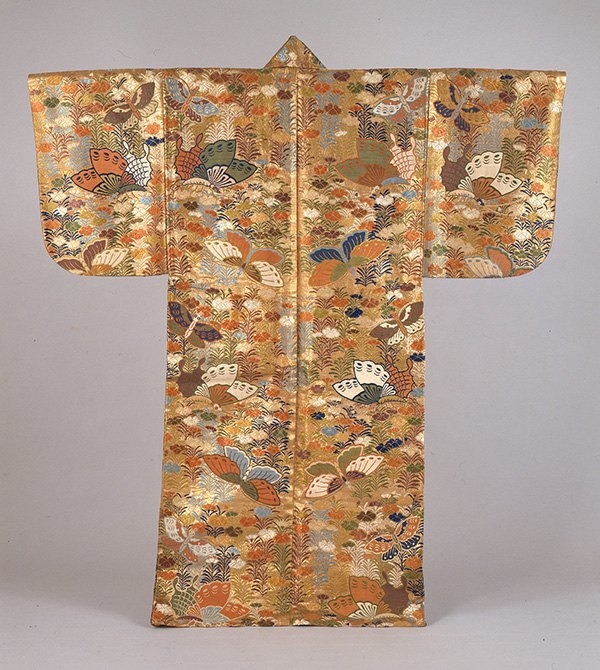
19th century, Edo period
Eisei Bunko Museum

Compiled in 16th century, Momoyama period, Transcribed in 1722 (Kyoho 7)
Eisei Bunko Museum (Entrusted to Kumamoto University Library)
Autumn Exhibition 2020
Highlights of the Hosokawa Collection
―the 50th anniversary in memory of the “Art Lord”, Hosokawa Moritatsu
- Period
- Saturday, September 12–Sunday, November 8, 2020
- Closed
- Mondays except September 21, 2020
Closed on September 23, 2020
The year 2020 marks the 50th anniversary of the death of Hosokawa Moritatsu (1883-1970), the 16th head of the Hosokawa family and the founder of Eisei Bunko. Moritatsu was known as an unrivaled collector who began to amass swords and Zen paintings by Hakuin and Sengai in his teens and later extended his interest in modern paintings and Oriental art. The artworks collected by Moritatsu form the core of the Hosokawa collection and characterize it. This year, in addition to more than twenty designated art pieces in the Hosokawa collection, “Ladies in a Room” by Matsuoka Eikyu and “Yu Rang” by Hirafuku Hyakusui from Moritatsu’s modern painting collection were newly designated as Important Cultural Properties.
This exhibition traces the history of the Hosokawa collection by presenting the finest pieces acquired by Moritatsu. Modern paintings such as the newly designated paintings mentioned above, “Black Cat” and “Fallen Leaves” by Hishida Shunso, swords, Zen paintings, and Chinese art are on display. “Portrait of Hosokawa Sumimoto” (Important Cultural Property) will also be exhibited for the first time after the completion of a two-year restoration.
We are pleased to invite visitors to enjoy the treasured collection of the “Art Lord”, Moritatsu.

Fallen Leaves
by Hishida Shunso
1909
Eisei Bunko Museum
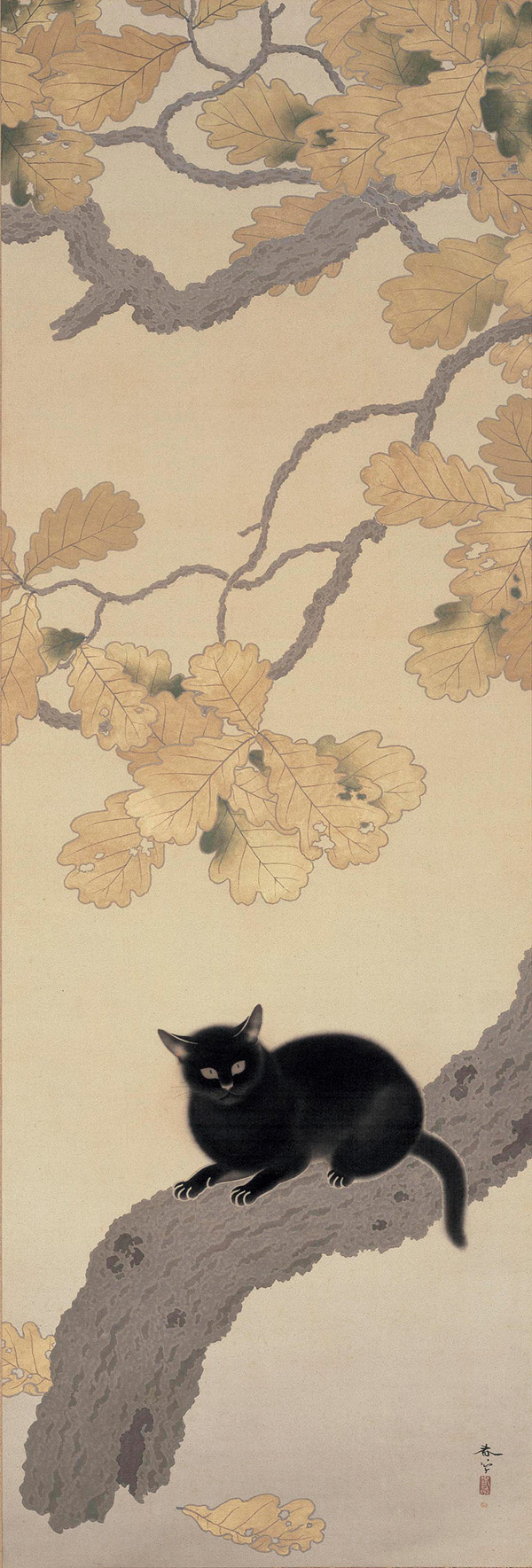
Black Cat
by Hishida Shunso
1910
Eisei Bunko Museum
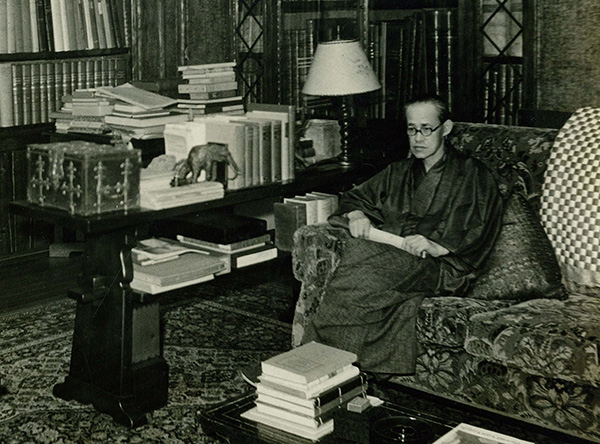
(1883-1970)
Winter Exhibition 2020
The Unknown Akechi Mitsuhide
―The Hosokawa and the Akechi, warrior lords that supported Nobunaga
- Period
- Saturday, November 21, 2020–Sunday, January 31, 2021
- Closed
- Mondays except November 23, January 11
Closed on November 24, December 28-31, January 1-8, 12 - Organizer
- Eisei Bunko Museum, Kumamoto University Eisei Bunko Research Center,
Kumamoto Prefectural Museum of Art
- Cooperation
- Kumamoto University Library
Akechi Mitsuhide served the Ashikaga Shogun family and was later given an important position by Oda Nobunaga. Working under the same master, Mitsuhide had a friendly association with Hosokawa Fujitaka, the first head of the Hosokawa family. Thus the Hosokawa collection in Eisei Bunko Museum includes numerous historical records such as Nobunaga’s letters addressed to Mitsuhide and Fujitaka that describe Mitsuhide’s situation and his movements. These letters indicate that Mitsuhide always acted in cooperation with Fujitaka in significant historical events, for instance, in fighting against Ikko Ikki (an uprising of Ikko sect followers), in executing Araki Murashige for betraying Nobunaga, and in conquering Tango Province.
This exhibition is based on the knowledge newly acquired by accessing historical documents about Mitsuhide’s activities in his early years, his military achievements under Nobunaga, collaborative relationship with his ally Fujitaka, and historical significance of the incident at Honnoji temple. We are excited to present Akechi Mitsuhide as a resourceful leader with advanced ideas, which overturns the stereotype of him as a traitor. The exhibition also introduces the turbulent life of Mitsuhide’s daughter, Tama (Gracia), who was married to Hosokawa Tadaoki by displaying related documents.
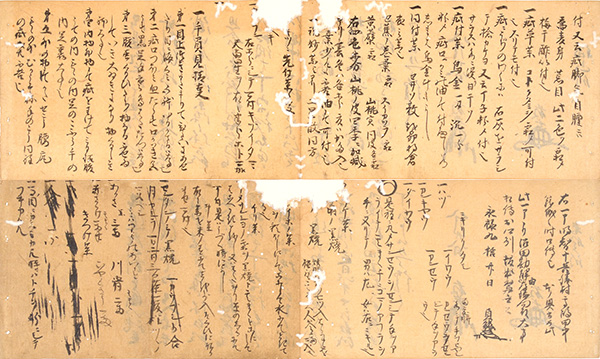
16th century, Muromachi period
Private collection (Entrusted to Kumamoto Prefectural Museum of Art)

Letter with Black Seal of Oda Nobunaga
1577 (Tensho 5), the 3rd month, 15th day
Eisei Bunko Museum (Entrusted to Kumamoto University Library)
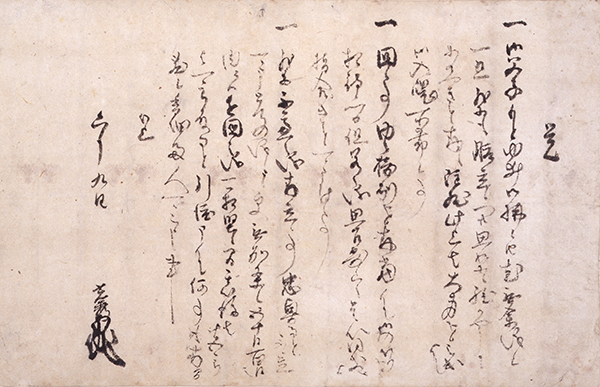
Memorandum by Akechi Mitsuhide
1582 (Tensho10), the 6th month, 9th day
Eisei Bunko Museum
On display from December 22 to January 31
Early Spring Exhibition 2021
Four Generations of the Hosokawa Family:
Moritatsu, Morisada, Morihiro, and Morimitsu
- Period
- Saturday, February 13 ―Sunday, April 11, 2021
- Closed
- Mondays
- Opening hours
- 10:00am to 4:30pm (last entry 4:00pm)
The successive heads of the Hosokawa Family, descended from the 1st head, Fujitaka, and the 2nd, Tadaoki, who lived during the Warring State Period, were prominent as active warriors as well as efficient feudal lords of the Kumamoto Clan. The Hosokawa lords were also known for their profound appreciation for arts such as poetry, Noh performance, tea ceremony, natural history, and paintings, and their tradition of placing importance on culture has continued over generations to the present day.
The 16th head, Moritatsu (1883-1970), who was known as the “Art Lord”, collected swords, Zen paintings and Oriental arts, while he patronized the artist of his time. He established Eisei Bunko in 1950. The 17th head, Morisada (1912-2005) who also had a reputation as a connoisseur of art, served as chairman of the Japan Kogei Association, and published books, held ceramic exhibitions, and collected paintings and stationery. The current head, Morihiro (1938- ) was active as politician, becoming Governor of Kumamoto Prefecture and the 79th Prime Minister of Japan. After turning 60 years old, Morihiro retired from political life and began creating his own ceramics. Recently he has been creating fusuma-e (sliding screen paintings) and completed works for temples in Kyoto and Nara. Morimitsu (1972- ) started his career as a ceramic artist in his twenties and built his kiln in Kumamoto in 2006. He is actively giving exhibitions throughout the country.
This exhibition is the first attempt to introduce the artworks created by the own hands of the four generations of the Hosokawa family: Moritatsu, Morisada, Morihiro, and Morimitsu. We hope the visitors feel and enjoy the aesthetic spirit that has been passed down through the family for nearly 700 years.
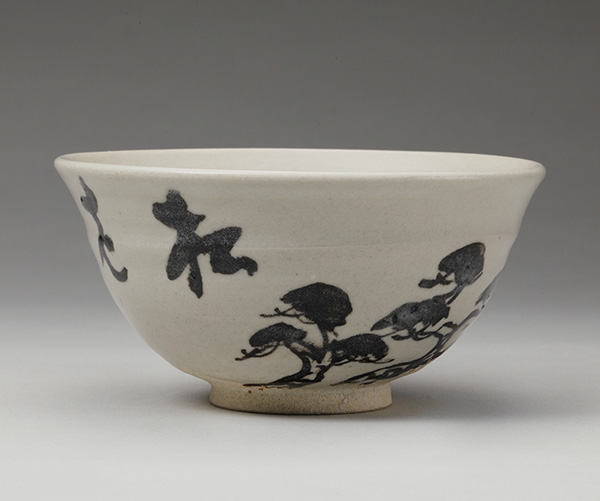
by Hosokawa Moritatsu
Eisei Bunko Museum
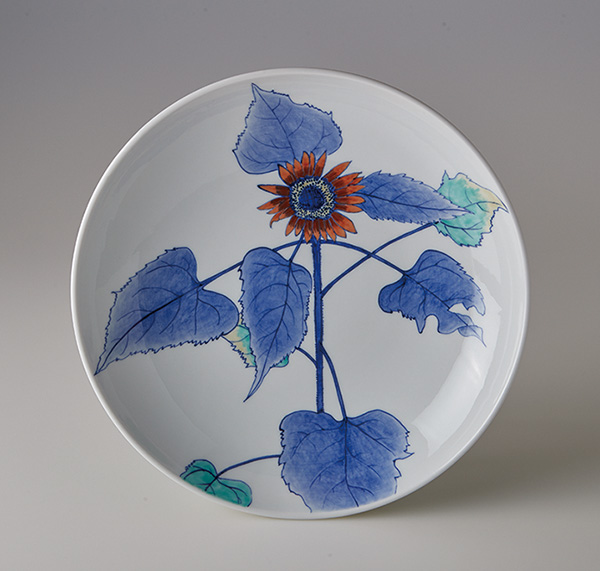
by Hosokawa Morisada
Private collection

by Hosokawa Morihiro
Private collection

by Hosokawa Morimitsu
Private collection